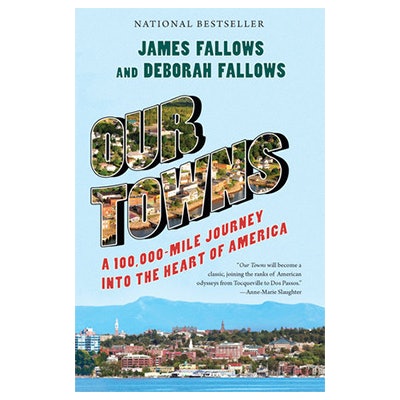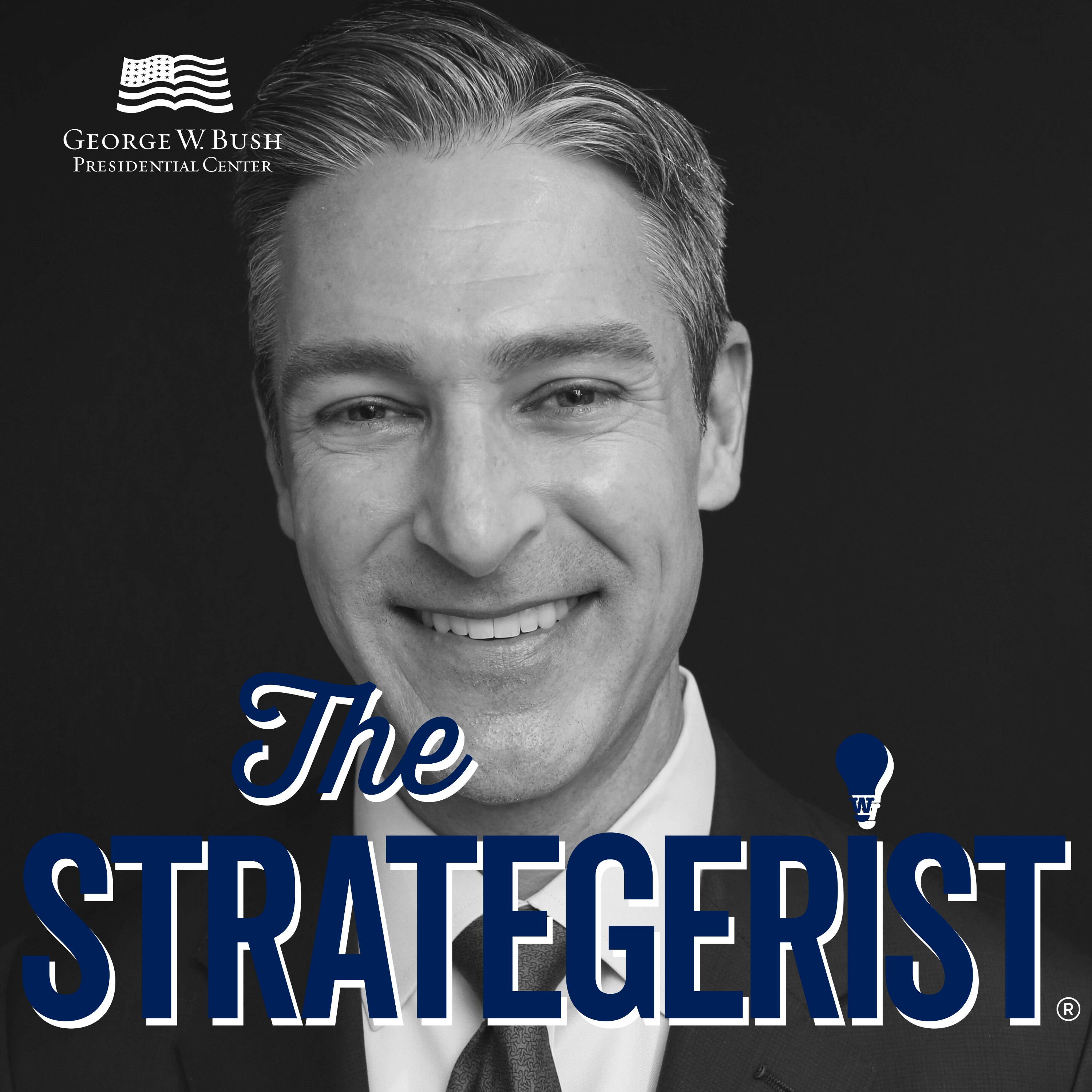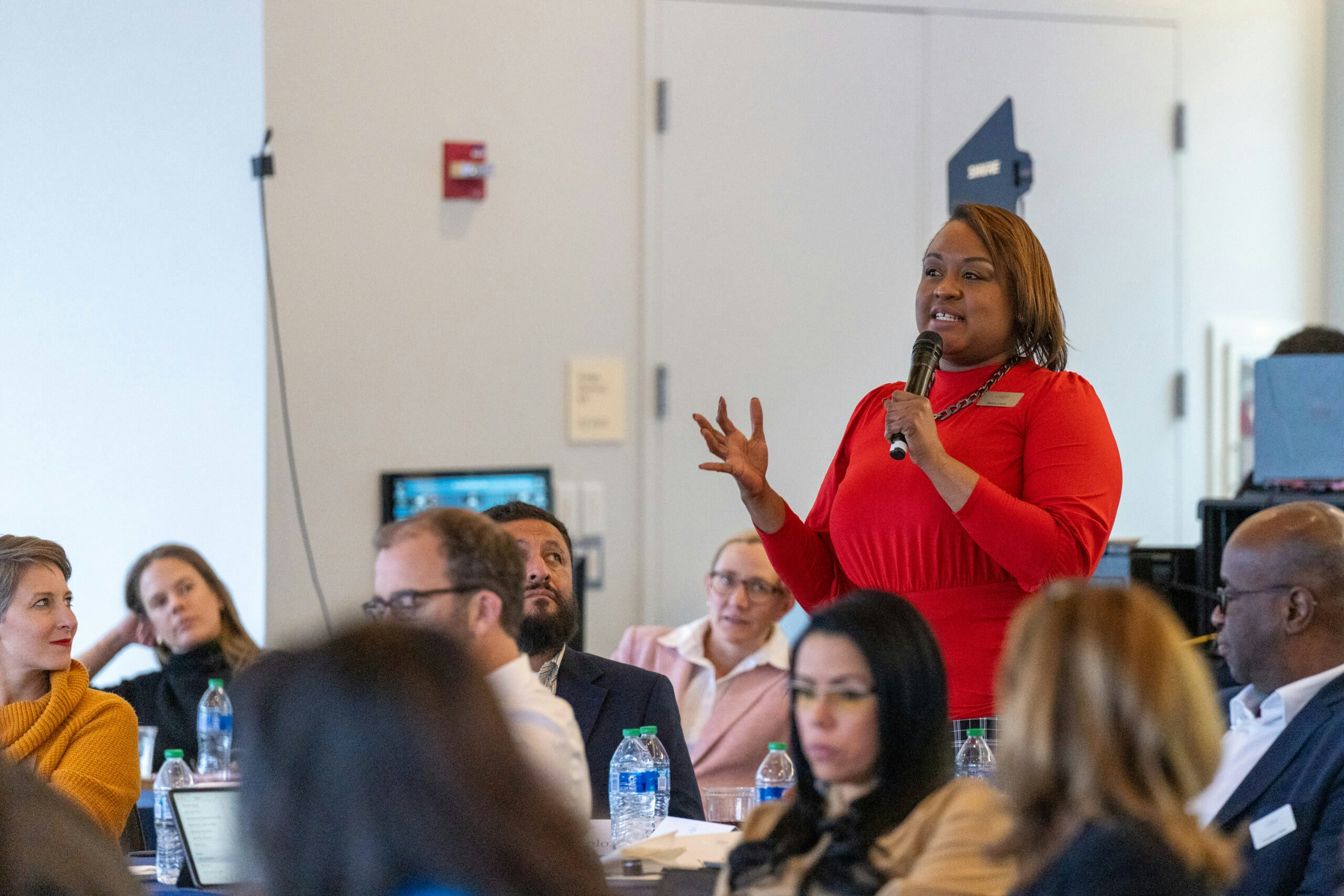James and Deborah Fallows discuss the role of libraries in expanding community engagement, the impact of immigrants in revitalizing communities, and how some communities are rebounding from the decline in local journalism.
James and Deborah Fallows started traveling across the United States in 2013 in their single-engine plane, searching to learn how communities address their challenges far away from the national spotlight. They began chronicling their discoveries in The Atlantic, where Jim Fallows has written since the late 1970s and where Deb Fallows contributes essays as a New America fellow. The pair also documented their reporting in a 2018 book, Our Towns, and in a 2021 HBO documentary by the same title.
The couple spoke about their findings with Chris Walsh, Senior Program Manager in the Human Freedom Initiative at the George W. Bush Institute, and William McKenzie, Senior Editorial Advisor at the Bush Institute. Among other points, they discussed the role of libraries in expanding community engagement, the impact of immigrants in revitalizing communities, and how some communities are rebounding from the decline in local journalism.
Let’s start with the question we are asking everyone in this series, and that is, how do you define community engagement?
Jim: I think it’s people feeling responsible for the world outside their own front door. And it means thinking of a community as not just a place where people can enjoy the amenities, whether that’s the arts, entertainment, or parks. They also feel some responsibility to be part of sustaining and creating those amenities.
Early on in our travels around the country, we got a note from somebody saying that if you wanted to “consume” a great community, you could move to San Francisco, Manhattan, Seattle, or name your place. But this person wanted to help create a community. That’s why he was moving from San Francisco to northern Texas. He wanted to be part of building something new.
So, community engagement is that sense of responsibility for things beyond your immediate household.
What did you find about what it takes to get people to work together on a project? And what stands in the way of that kind of collaboration?
Deb: Deciding to work together requires a sense that people have agency to act in their towns. And it requires having a passion for the local, community issues and believing that they can make some progress with them.
Jim: I agree and think there is the long-term sense of practicality and possibility, which has a number of short-term components. For example, if you think the problems or possibilities of your community are of such a scale that your effort will make some kind of difference, then you will take the intermediate steps to realize the vision.
What are the obstacles to finding agency or realizing an issue is of a manageable scale?
Jim: There’s a class of communities, almost by definition, that people don’t feel are “theirs.” That could be a place people move to live and commute from as part of some larger sprawl. They don’t feel involvement.
But some communities intentionally make themselves open and inclusive. They have a sense of “us-ness” that is permeable — in the sense that people can become part of it. People feel like they can make a difference even though they weren’t born there. It can be a real obstacle if people feel that they’re never going to be a part of the community because they weren’t born there. But it’s significant when communities intentionally work on making people feel they can be “us.”
Deb: One thing we heard frequently is that people don’t know where or how to start improving their communities. It’s easier when the issues are something with which you are personally involved, like the school PTA or how long the swimming pool should be open. But if people are looking at how to make Main Street more vibrant, or how to become more inclusive to an incoming immigrant population, those bigger questions can stymie people, especially if they are not sure who should be the leaders. That is often a stopper for people.
Are issues like this easier to address in a small town? Or is a big town anonymous enough that people feel like they can do something?
Deb: We often heard, “My town is the perfect size. It’s big enough that there’s a lot going on here, like in the arts or with the environment. Yet it’s small enough that we can get something done.” More than the actual size, it’s about people feeling like they are part of the town and can engage with it.
Jim: And Deb’s talking about places where there was some functionality — the healthier communities. We saw that in places as big as Columbus, Ohio, which is a huge metropolis but where people felt as if it worked as a big little town. And we saw it in places as small as Eastport, Maine, where every single person had 10 civic jobs.
When you look at functional big cities, they have been able to array themselves into conceptual or physical smaller neighborhoods. They create a manageable scale, where the place is big enough to do things and have opportunities, but small enough to have agency. That is one of these best practices that we came across.
What is the impact of younger people on community renewal? For example, you write about what the presence of brewpubs says about the health of a community.
Jim: I have become even more convinced than I used to be about the importance of deliberately setting out to make places for young people — and older people, too. I’ll give an off-topic example and come back to this.
Somewhat off-topic: There’s more emphasis now on the importance of civics education, that developing this skill is like learning to drive, or to get in a habit of physical fitness. It isn’t something that people automatically learn, without being taught. You don’t automatically learn how a democracy works and what the Senate does and all the rest. It’s important to actually teach people civics.
Now, about my hometown of Redlands, California. It is a very civically dense place. Part of the way they create that is through elementary school classes on the history of the town. People are taken on tours, and you see who our benefactors are. In our case, it was the Smiley Brothers. That’s why my old elementary school was Smiley School, and that’s why we had the Smiley Library.
You need to create opportunities for young people to do something that’s interesting, that may be adventuresome, and that takes them to different parts of the country. You need to intentionally work on those programs to involve kids — plus create brewpubs.
You need to create opportunities for young people to do something that’s interesting, that may be adventuresome, and that takes them to different parts of the country.
Deb: You’ve hit on a topic people mentioned a lot: “How do we get kids and young families involved? They’re all so busy. How do we reach them?”
The answer seems to be that you meet them where they are interested. What Jim talked about with the Redlands fourth-grade history project is an example. The school district and the library together run a program to take the kids on a four-hour school bus tour to see where the town’s founders grew up and lived, the 100-year-old library, and the 200-year-old water system built to bring water to the Asistencia Mission.
Jim: To interrupt, they also see the very first navel orange tree in California! My hometown’s industry was oranges.
Deb: Yes, and they take the kids to see the orange-packing house, which still operates in the middle of town. By the end of the tour, the kids become town historians. And they go home and tell their parents about the history of their town.
We saw a statewide program in Delaware where kids were given a camera, asked to take pictures in their towns, and then describe why the picture is important to them. Programs like that get kids doing something, making something, and then explaining in words what their hometown means to them.
Another program in Winters, California, leads to the question of how do we keep kids in our community? Or how do we have them come back and support families in the town?
Winters is in a fruit-and-nut growing area east of San Francisco. In school, the kids learn about the history of farming and the new precision agriculture methods of farming. They have a little farm outside the school. They learn how to maintain and take care of the equipment. Students are getting an idea of what the future can hold for them in farming and that it’s cool.
Deb, you have written about how libraries create community engagement. How does that happen?
Deb: Pre-pandemic, the biggest lesson we learned is that libraries are more than places where you go to borrow or read books. They are social and civic centers and education and technology centers. Preschoolers can learn pre-reading skills; immigrants can learn about green cards and citizenship; this last year, during the pandemic, libraries informed people about where to get tested for COVID-19 or how to get vaccinated.
I wrote one piece about libraries being “second responders” after hurricanes, tornadoes, floods, riots, and shootings. They have become a go-to place to help a community work through troubles.
They also know how to pivot. During the pandemic, libraries have helped people with digital access. In a number of communities, libraries provided hotspots where kids without wifi at home could access their virtual school programs.
The Friends of the Library in Winters, California, set up a “stroller spotting” program, stopping new parents pushing strollers with infants. They gave the parents a baby box with a book, bib, and library card, opening the door to a community of people who might not otherwise stumble onto the library.
Jim: If you’re looking for ways to foster engagement, libraries may be the most promising institutions of the moment. They are less politicized than almost any other institution. They may be one of the best institutions now for intentionally building or recreating engagement.
What did you all find about the role of immigrants in revitalizing communities?
Jim: Immigration is as important a foundation of the American spirit and the American ideal in the early 21st century, as it has been in any point in the country’s history. Some of the most encouraging communities we saw were ones that recognized the way for themselves to prosper — and not just economically but also culturally, ethically, and spiritually — was to recognize that the story of America is one of constant inclusion. The American story is a constant aspiration towards inclusion with all sorts of bends in the road and along the way.
I’ll give you illustrations from the Upper Midwest of communities attracting refugees or people from other parts of the country. The clearest example is Erie, Pennsylvania. About 10% of its population is refugees, whom they deliberately attract to Erie.
Two other examples are Sioux Falls, South Dakota, and Dodge City, Kansas. Their industries, from beef packing-houses to agricultural high-tech, have given them a much more diverse population. And leaders of those communities, who are on the conservative side of national politics, recognize that the future of their cities needs to be an inclusive one. Conservative Republican Mayor Paul TenHaken wears a One Sioux Falls pin on his lapel, recognizing that the city needs to make itself an inclusive long-term community.
In Dodge City, a highly respected city official, Ernestor De La Rosa, has been in the U.S. on a DACA waiver. A conservative, mainly white city leadership recognized that the city’s future was including people like Ernestor and his family.
Immigration is the central positive theme through American history, e pluribus unum. It’s never been problem-free, and it always has required adjustment from all involved. But many of the communities that we saw recognized immigration as their future.
In our experience, and you all in Texas would recognize this, the most fearful complaints about the effects of immigration come from places where the immigrants aren’t. The further away you are from the U.S. southern border, for example, the more concerned people are about the caravan from Central America. Places that deal with immigration and ethnic change have inevitable tensions but there’s not the fear of immigration that you find in places where immigrants haven’t come.
Immigration is the central positive theme through American history, e pluribus unum. It’s never been problem-free, and it always has required adjustment from all involved. But many of the communities that we saw recognized immigration as their future.
Let’s wrap up with the impact the decline in local journalism is having on communities. What did you all find? And how are some of these communities trying to rebound from the decline?
The economic pressure on journalism as a whole, which has been most intense on local community papers, is maybe the biggest challenge now to civic engagement and civic vitality. This has to be intentionally offset after the erosion of a local advertising base or the takeover of local institutions by national hedge funds whose interests are at odds with those of the local community.
Deb and I have started a tiny foundation, the Our Towns Civic Foundation, to connect people around the country who are dealing with the challenges to local vitality and how best to deal with the challenges. One area we intend to focus our attention on is the range of experimentation to keep local journalism going. For example, in tiny Eastport, Maine, they still have a vital and thick local newspaper called the Quoddy Tides. You do that by reporting on every kind of local news to build an audience.
There are other places where partnerships with a university, a public radio station, a museum, or a local foundation are how things are done. And there are places where new institutions like Report for America have been very important. Then, there’s the wave of locally-based NGOs, nonprofits, and news collectives or collaboratives. In places like West Virginia, Tennessee, and parts of California, this is part of the wave of the future.
There is no single answer, but everything will be the answer. The experimentation that’s going on will be the solution. Paying attention to the everything is an important next step.



























